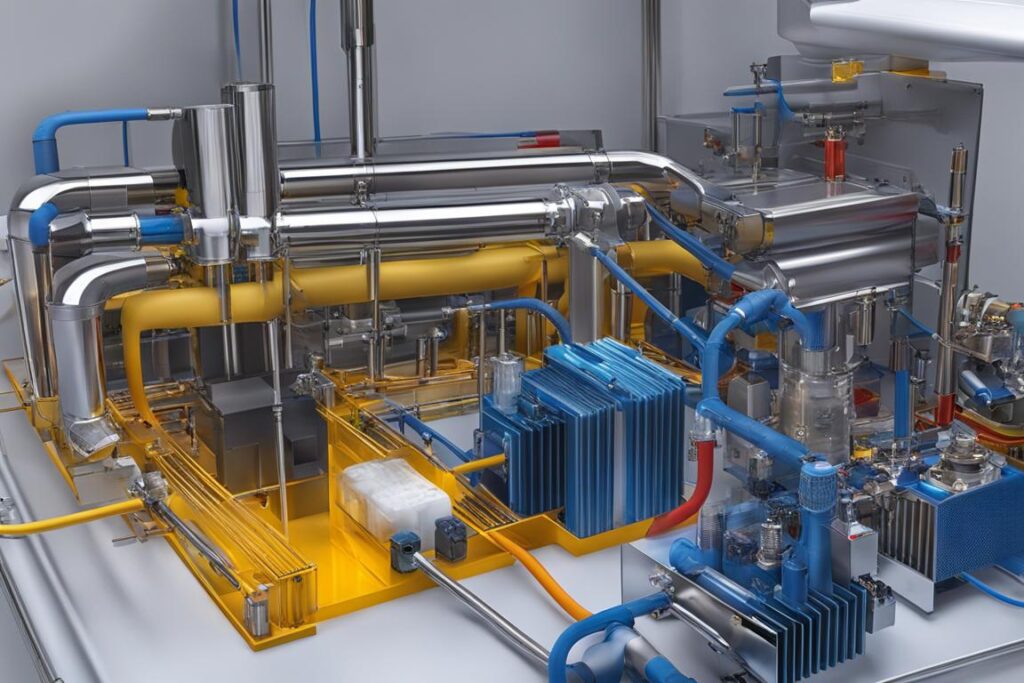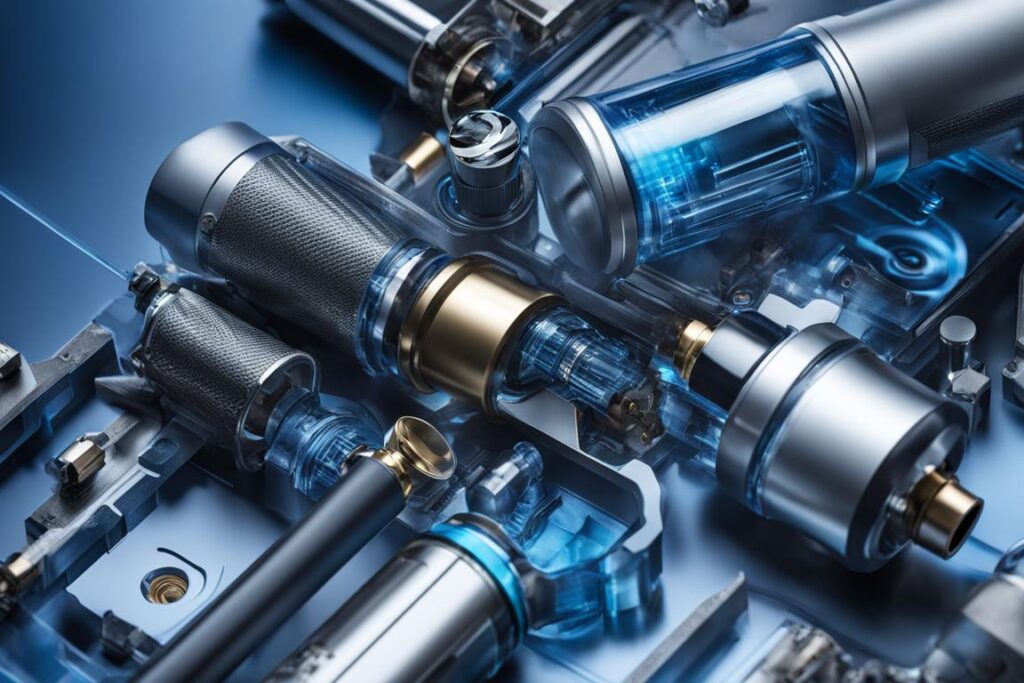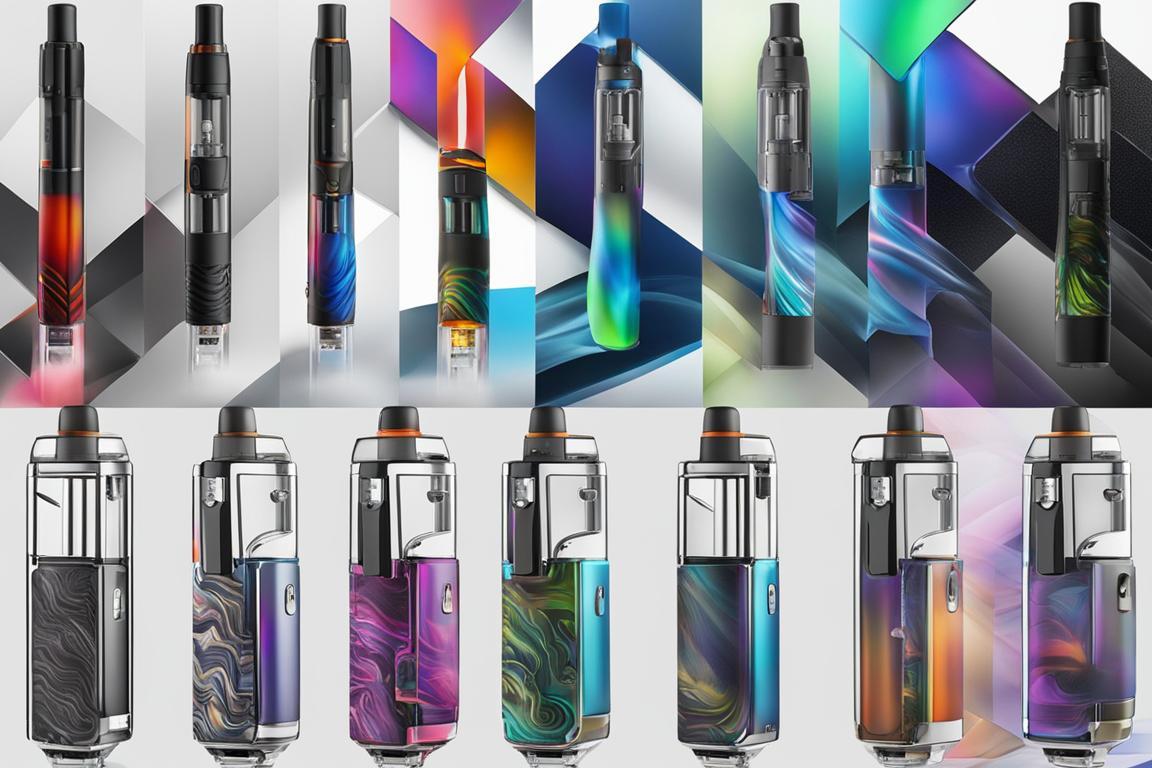One of the best things about vaping is the ability to customize the experience, and adjustable airflow plays a crucial role in enhancing that experience. Vape devices on the market offer adjustable airflow options, allowing users to personalize their vapor production. The airflow control in a vape device determines the amount of air that moves from the coil to the mouth, which ultimately affects the temperature, flavor intensity, throat hit, and cloud production of the vape. Adjusting the airflow to higher settings results in cooler and smoother clouds with reduced flavor intensity, while lower settings provide warmer, more flavorful hits. Finding the right airflow adjustment can enhance the vaping experience to suit individual preferences.
Table of Contents
Toggle- Why is Airflow Important When You Vape?
- How Does Vape Airflow Control Work?
- The Impact of Airflow on Vaping Styles
- Debunking Airflow Myths in Vaping
- Choosing the Right Airflow for Your Vaping Experience
- Conclusion
- FAQ
- What does airflow do on a vape?
- Why is airflow important when you vape?
- How does vape airflow control work?
- What is the impact of airflow on vaping styles?
- Are there any misconceptions about airflow in vaping?
- How do I choose the right airflow for my vaping experience?
- Can I customize my vaping experience with airflow?
- Source Links
Key Takeaways:
- Vape devices offer adjustable airflow, allowing users to personalize their vapor production.
- Adjusting the airflow affects temperature, flavor intensity, throat hit, and cloud production.
- Higher airflow settings result in cooler and smoother clouds with reduced flavor intensity.
- Lower airflow settings provide warmer, more flavorful hits.
- Customizing the airflow enhances the vaping experience to suit individual preferences.
Why is Airflow Important When You Vape?
Airflow plays a crucial role in the vaping experience, offering vapers the ability to customize their sessions and enjoy a personalized vapor production. Unlike traditional cigarettes, vape devices with adjustable airflow provide the freedom to control the amount of air drawn into the device. This adjustable feature directly impacts various aspects of vaping, including flavor intensity, cloud production, and throat hit. By having the power to regulate the airflow, vapers can achieve their desired balance of flavor, vapor temperature, and cloud size, elevating their overall vaping experience.
Adjustable airflow in vaping comes with several benefits that enhance the overall satisfaction of users. Let’s explore the advantages:
1. Enhanced Flavor: With adjustable airflow, vapers can fine-tune their devices to maximize the flavor of their e-liquids. By narrowing the airflow, vapers can create a more concentrated and intense flavor, which is ideal for those who enjoy a robust taste.
2. Increased Cloud Production: Wide-open airflow settings allow for increased vapor production, resulting in larger and denser clouds. This is particularly appealing to cloud chasers who enjoy showcasing their vaping skills and producing impressive plumes.
3. Customizable Throat Hit: The throat hit, which refers to the sensation felt at the back of the throat when inhaling vapor, can be adjusted by modifying the airflow. Vapers can find their preferred balance, whether they prefer a smooth and gentle throat hit or a stronger and more intense sensation.
Types of Adjustable Airflow
Vape devices offer different mechanisms for adjusting airflow, allowing users to find their preferred style:
| Adjustable Airflow Mechanism | Description |
|---|---|
| Airflow Control Rings | These are the most common types of adjustable airflow found in vape tanks. By rotating slots or holes on the tank, users can easily modify the airflow according to their preference. |
| Under Coil Inserts | Primarily used in high-end rebuildable tanks, under coil inserts require physically attaching or removing inserts below the coil to adjust the airflow. This provides a more precise and customizable airflow control. |
By understanding the importance of airflow and utilizing the benefits of adjustable airflow in vaping, enthusiasts can create a tailored experience that suits their preferences. Whether it’s enhancing flavor, increasing cloud production, or customizing the throat hit, adjustable airflow empowers vapers to enjoy vaping to the fullest.
How Does Vape Airflow Control Work?
Vape airflow control plays a crucial role in enhancing the vaping experience by allowing users to regulate the amount of air that enters the device during inhalation. This control mechanism directly impacts various aspects of the vaping experience, such as flavor intensity, cloud production, and throat hit. By adjusting the airflow, vapers can fine-tune their device to match their preferences and achieve the desired vaping experience.
There are two common types of vape airflow control:
- Airflow Control Rings: The most popular type of airflow control, these rings can be found in most tanks with 510 connections. They feature slots or holes that can be rotated to adjust the airflow. By simply twisting the control ring, vapers can increase or decrease the amount of airflow entering the device.
- Under Coil Inserts: Typically found in high-end rebuildable tanks, under coil inserts require physically attaching or removing inserts below the coil to change the airflow. This type of airflow control provides vapers with even more precise control over their vaping experience.
Both types of airflow control give users the ability to tailor their vaping experience to their liking. Whether it’s a tighter draw for a more concentrated flavor or a more open airflow for bigger clouds, adjusting the airflow allows vapers to customize the device to suit their preferences and enhance their overall satisfaction.

Understanding the working mechanism of vape airflow control and the types available empowers vapers to make informed decisions about their device setup. By experimenting with different airflow settings, vapers can unlock the full potential of their device and elevate their vaping experience to new heights.
The Impact of Airflow on Vaping Styles
The impact of airflow varies depending on the vaping style. For mouth-to-lung (MTL) vaping, where users draw vapor into their mouths before inhaling it into their lungs, a tighter airflow is preferred. This provides a more concentrated and flavorful vapor. In contrast, direct lung (DL) vaping involves inhaling the vapor directly into the lungs, requiring a more open airflow to generate larger clouds and a cooler vape. Cloud chasing, a vaping style focused on producing massive clouds, benefits from maximum airflow for unrestricted inhalation and vapor production.
By adjusting the airflow to match their preferred vaping style, users can optimize the flavor, cloud production, and overall satisfaction of their vape.
Debunking Airflow Myths in Vaping
There are common misconceptions surrounding airflow in vaping that can lead to confusion and unnecessary concerns. Let’s address some of these myths to provide vapers with accurate information and help them make informed choices about their vaping setup.
Airflow and Vape Leaks
Contrary to popular belief, airflow holes do not cause vape leaks. Leaks are typically caused by other factors such as flooded coils or overfilling the tank. The purpose of airflow holes is to regulate the amount of air that enters the device, not to cause leaks. So, if you’re experiencing leaks, it’s essential to check other aspects of your vape setup rather than blaming the airflow holes.
Airflow and Coil Life
Another misconception is that airflow directly impacts coil life. In reality, coils are primarily affected by poor wicking or flooding, rather than the airflow. Proper wicking ensures that the coil receives enough e-liquid to vaporize, maintaining a consistent flavor and prolonging the lifespan of the coil. So, instead of adjusting the airflow, focus on proper wicking techniques to extend your coil’s life.
Airflow and Nicotine
While adjusting the airflow in your vape device can alter the flavor, sensation, and throat hit, it does not affect the nicotine concentration in the vapor. The amount of nicotine in e-liquid is determined by the e-liquid itself, not the airflow. So, adjusting the airflow to your preference won’t increase or decrease the nicotine content in the vapor. Keep this in mind when experimenting with airflow settings and flavor profiles.
Understanding these airflow myths can help vapers avoid unnecessary concerns and focus on optimizing their vaping experience. By debunking these misconceptions, vapers can confidently adjust their airflow settings, address other potential causes of leaks, and maximize the lifespan of their coils without worrying about the nicotine content in their vapor.

Choosing the Right Airflow for Your Vaping Experience
Finding the optimal airflow for your vaping experience is key to enjoying the full potential of your vape device. Several factors contribute to the ideal airflow setting, including the VG/PG ratio of your e-liquid, coil resistance, wattage, and personal preference. Experimentation is essential to discovering your perfect setting.
For mouth-to-lung (MTL) vaping, where you draw the vapor into your mouth before inhaling, a narrow airflow setting is recommended. This creates a more restricted draw, enhancing the concentration of flavor and providing a satisfying experience. On the other hand, direct lung (DL) vaping involves inhaling the vapor directly into your lungs. For this style, a slightly more open airflow is preferred to achieve a balanced flavor and optimal vapor production.
If you love chasing clouds, wide-open airflow is essential. Maximize the airflow to create turbulence, allowing for massive cloud production and an exhilarating vaping experience. However, keep in mind that cloud chasing often sacrifices some of the flavor intensity.
Remember to adjust the airflow according to your preferences. By finding the right balance for flavor, cloud production, and throat hit, you can enhance your vaping experience and enjoy every puff.
| Factors to Consider | Airflow Recommendation |
|---|---|
| VG/PG Ratio | – High VG: More airflow – High PG: Less airflow |
| Coil Resistance | – Low Resistance: More airflow – High Resistance: Less airflow |
| Wattage | – Low Wattage: Less airflow – High Wattage: More airflow |
| Personal Preference | – Vary the airflow to find your ideal setting |
By considering these factors and adjusting the airflow accordingly, you can achieve the desired flavor intensity, cloud production, and throat hit for an exceptional vaping experience.
Conclusion
Vape airflow control is a crucial element for customizing your vaping experience, allowing you to tailor your flavor, cloud production, and throat hit to your liking. By adjusting the airflow settings according to your preferences and vaping style, you can optimize your satisfaction and enjoyment.
Understanding the impact of airflow and debunking common myths empowers vapers to make informed decisions about their vaping setup. Contrary to popular belief, airflow holes do not cause vape leaks, and adjusting the airflow does not directly affect coil life or nicotine content.
To find the optimal vape airflow setting, it is important to experiment and consider factors such as the composition of your e-liquid, coil resistance, and personal preference. Whether you prefer mouth-to-lung vaping for intense flavor, direct lung vaping for a balanced experience, or cloud chasing for massive clouds, customizing the airflow is the key to creating a truly personalized vaping experience.
So, take the time to explore different airflow settings, fine-tune them to your liking, and enjoy the full potential of your vape. With the right airflow, you can elevate your vaping experience and savor every puff.
FAQ
What does airflow do on a vape?
Airflow control in a vape device determines the amount of air that moves from the coil to the mouth, affecting the temperature, flavor intensity, throat hit, and cloud production of the vape.
Why is airflow important when you vape?
Adjustable airflow allows users to tailor their vaping experience to their preferences, optimizing flavor, vapor temperature, cloud production, and throat hit.
How does vape airflow control work?
Vape airflow control works by allowing users to regulate the amount of air that enters the device during inhalation. There are two common types: airflow control rings and under coil inserts.
What is the impact of airflow on vaping styles?
For mouth-to-lung vaping, a tighter airflow is preferred for concentrated flavor. Direct lung vaping benefits from a more open airflow for larger clouds and a cooler vape. Cloud chasers benefit from maximum airflow for unrestricted inhalation and vapor production.
Are there any misconceptions about airflow in vaping?
Yes, there are common misconceptions. Airflow holes do not cause vape leaks, airflow does not directly impact coil life, and airflow does not affect nicotine content.
How do I choose the right airflow for my vaping experience?
Factors such as e-liquid composition, coil resistance, and personal preference should be considered. Experimentation is key to finding the optimal airflow setting for flavor, cloud production, and throat hit.
Can I customize my vaping experience with airflow?
Yes, by adjusting the airflow settings to match individual preferences and vaping styles, users can optimize their enjoyment and satisfaction of the overall vaping experience.

